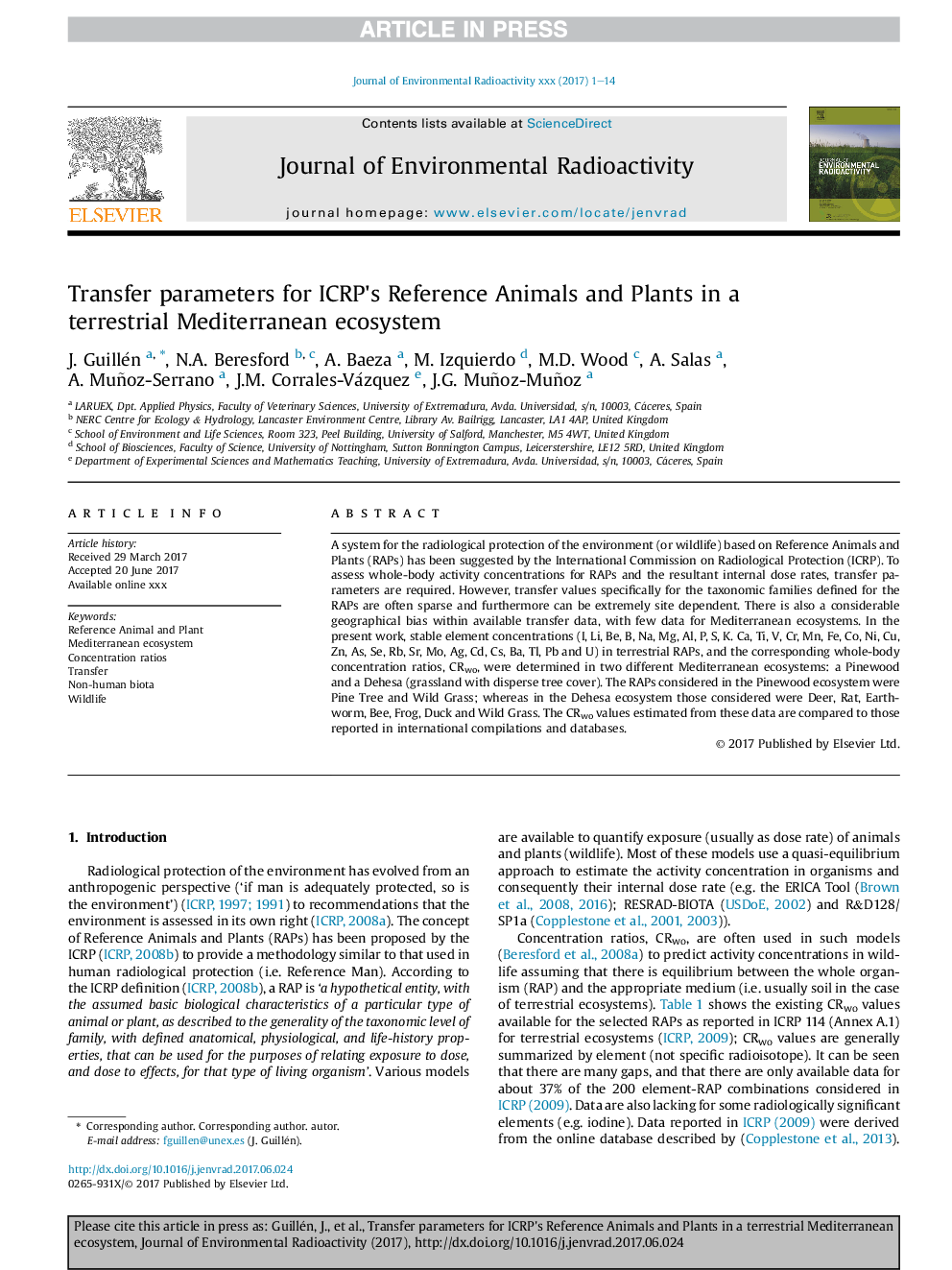| Article ID | Journal | Published Year | Pages | File Type |
|---|---|---|---|---|
| 8080638 | Journal of Environmental Radioactivity | 2018 | 14 Pages |
Abstract
A system for the radiological protection of the environment (or wildlife) based on Reference Animals and Plants (RAPs) has been suggested by the International Commission on Radiological Protection (ICRP). To assess whole-body activity concentrations for RAPs and the resultant internal dose rates, transfer parameters are required. However, transfer values specifically for the taxonomic families defined for the RAPs are often sparse and furthermore can be extremely site dependent. There is also a considerable geographical bias within available transfer data, with few data for Mediterranean ecosystems. In the present work, stable element concentrations (I, Li, Be, B, Na, Mg, Al, P, S, K. Ca, Ti, V, Cr, Mn, Fe, Co, Ni, Cu, Zn, As, Se, Rb, Sr, Mo, Ag, Cd, Cs, Ba, Tl, Pb and U) in terrestrial RAPs, and the corresponding whole-body concentration ratios, CRwo, were determined in two different Mediterranean ecosystems: a Pinewood and a Dehesa (grassland with disperse tree cover). The RAPs considered in the Pinewood ecosystem were Pine Tree and Wild Grass; whereas in the Dehesa ecosystem those considered were Deer, Rat, Earthworm, Bee, Frog, Duck and Wild Grass. The CRwo values estimated from these data are compared to those reported in international compilations and databases.
Related Topics
Physical Sciences and Engineering
Energy
Nuclear Energy and Engineering
Authors
J. Guillén, N.A. Beresford, A. Baeza, M. Izquierdo, M.D. Wood, A. Salas, A. Muñoz-Serrano, J.M. Corrales-Vázquez, J.G. Muñoz-Muñoz,
